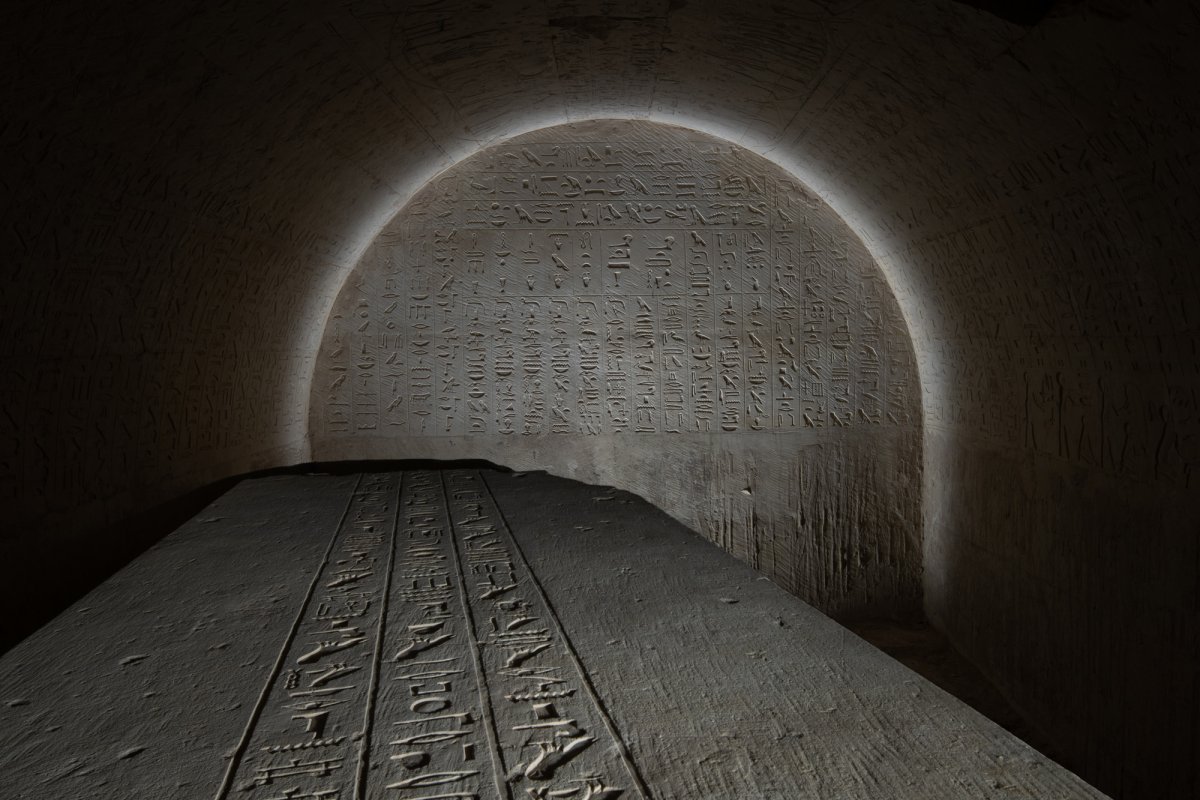Archaeologists have discovered the "richly decorated" tomb of an ancient Egyptian dignitary that is filled with magic spells aimed at protecting against snake bites.
The tomb, thought to date to the middle of the 1st millennium B.C., was uncovered during excavations conducted in April and May at the archaeological site of Abusir, the Czech Institute of Egyptology (CIE) at Charles University in Prague, which led the investigations, announced Friday.
Abusir is an ancient pyramid complex in northern Egypt between the important archaeological sites of Giza and Saqqara, the latter being home to a vast necropolis.
The newly discovered tomb is in a western part of Abusir that served as a cemetery housing the final resting places of high-ranking officials and military commanders from ancient Egypt's 26th and 27th dynasties.

"The cemetery of shaft tombs in west Abusir is one of the largest known from the Abusir and Saqqara necropolises," Miroslav Bárta, archaeologist with the Czech Institute who led the excavations, told Newsweek.
The tomb belongs to a previously unknown dignitary who lived during a turbulent period in ancient Egyptian history when the region was invaded by Persian forces, according to the Czech Institute archaeologists. The dignitary was a royal scribe who went by the name Djehutyemhat.
"It is a richly decorated shaft tomb of medium-size, whose owner, a certain Djehutyemhat, held the office of a royal scribe," Ladislav Bareš, one of the archaeologists, said in a press release.
"This new find, together with our previous discoveries from this excavation site ... will shed more light on historical changes taking place in Egypt in the turbulent times of the 6-5th centuries B.C."
The upper part of the tomb, which is above ground, appears to have been destroyed in antiquity. But the burial chamber, at the bottom of a primary shaft almost 50 feet below the ground, is richly decorated with various texts and artworks.
The northern wall, for example, is covered with a long sequence of spells that were intended to protect against snake bites. "In those times, venomous snakes were a daily reality," Bárta told Newsweek.
Intriguingly, the snakes mentioned in the spells were considered dangerous, but they also acted as powerful protectors of the deceased and his mummy.
The southern and western walls of the burial chamber are adorned with ritual offerings. On the ceiling, there are depictions of the sun's journey across the sky, accompanied by hymns to the rising and setting of our star.
Within the burial chamber lies a large, stone sarcophagus, or coffin, covered with hieroglyphic inscriptions and depictions of gods.
Among the inscriptions are excerpts from the Book of the Dead—a collection of ancient Egyptian funerary texts consisting of spells or magic formulas that were placed in tombs. These texts were thought to protect and aid the deceased in the afterlife.
The sarcophagus also bears images of the goddesses Isis and Nephthys, accompanied by texts in which they provide protection to the deceased. Imentet, goddess of the West, is also depicted.
🇨🇿 Objev hrobky královského písaře v Abúsíru V dubnu a květnu letošního roku proběhla v egyptském Abúsíru další část terénního výzkumu šachtových hrobek...
"The goddess of the West, depicted inside the sarcophagus, represents a protector and guide, and also the symbolic mother of the deceased," Jiří Janák, the team's expert on the interpretation of ancient religious and magical texts, said in the press release.
The magical texts included in the tomb were intended to ensure the deceased's smooth entry into the afterlife, according to the archaeologists.
The researchers also found several scattered bones from Djehutyemhat's skeleton to the east of the sarcophagus, although the mummy of the royal scribe was no longer in the coffin, Bárta said.
Anthropological analysis of the skeletal remains, undertaken by leading ancient Egyptian experts, has shown that the dignitary died at a relatively early age—approximately 25 years old. The analysis also showed that he bore signs of occupational health problems—including wear on the spine from sedentary work—and suffered from severe osteoporosis.
This latter finding could place him within the family of other individuals buried at the cemetery, whose remains also display signs of the disease.
Unfortunately, Djehutyemhat's tomb was found to contain relatively few artifacts, having been robbed—like other tombs in this burial site—probably as early as the 5th century A.D. However, the team did find a collection of pottery, including bowls and jars, in one shaft during its excavations.
Uncommon Knowledge
Newsweek is committed to challenging conventional wisdom and finding connections in the search for common ground.
Newsweek is committed to challenging conventional wisdom and finding connections in the search for common ground.
About the writer
Aristos is a Newsweek science reporter with the London, U.K., bureau. He reports on science and health topics, including; animal,... Read more
To read how Newsweek uses AI as a newsroom tool, Click here.







